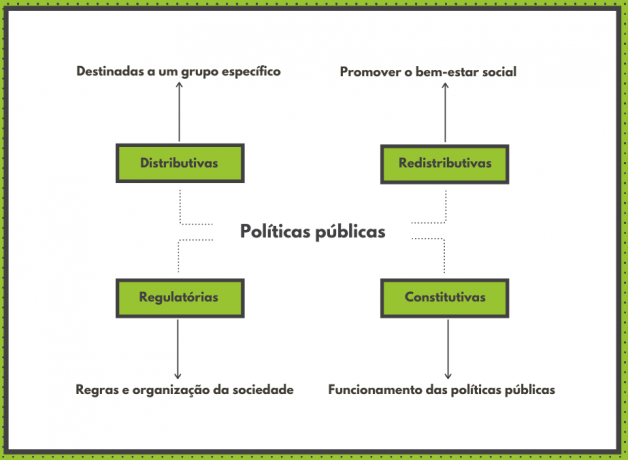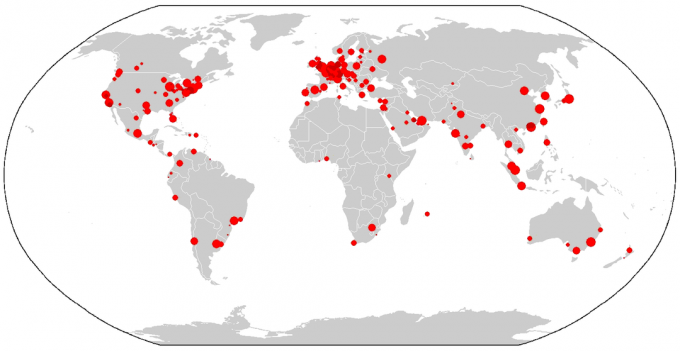Public policies are measures created by governments to guarantee rights, assistance or provision of services to the population.. The objective is to ensure that the population has access to the rights guaranteed by law.
These measures are an important part of public administration, as they represent government plans and are created to improve society and meet the needs of citizens.
Public policies are also a way to help reduce social inequalities that exist in a country and can be used as a tool for social inclusion.
There can be many types of public policies, in all areas, which are chosen according to local need. Some examples are: health, education, social assistance, culture policies, among others.
Types of public policies
Public policies are divided into four types, according to the objectives and area of influence of the measures:
This is the most used classification for public policies. It was created by political scientist Theodore Lowi (1931-2017), who carried out important research on the subject.
Distributive Policies
They are aimed at certain groups of people, to benefit part of the population that does not have access to a certain right. These policies can be defined according to the characteristics or special needs of a social group.
Examples: establishment of special tariff policies, offering services for specific needs and offering tax incentives for small businesses.
Redistributive Policies
Redistributive policies have a social character, are aimed at ensuring social well-being. In general, they are applied to larger groups of people, with the aim of bringing benefits and more equality to their target audience.
Examples: programs aimed at distributing income and determining the collection of progressive taxes proportional to the amounts earned.
Also read about the meaning of welfare state.
Regulatory Policies
These are policies used to organize the functioning of the State and may involve rules relating to bureaucratic processes or norms of citizen behavior. They are more comprehensive as they can be targeted to many people. That is, unlike the previous ones, they are not only related to certain groups of people.
Examples: rules that regulate the use and sale of products and the mandatory use of a special seat for transporting children.
Constitutional Policies
These measures are different from the others. They regulate the procedures and rules relating to public policies in aspects such as: form correct preparation of public policies and the determination of who is responsible for the elaboration of the measures.
Examples: operating rules for elections and the form of distribution of funds that will be used for the created public policies.

Public policies in Brazil
In Brazil, policies are designed through the analysis of needs and citizen participation. Most governments offer the possibility for people to indicate what needs they consider most urgent in their region.
And this can be done in a number of ways. The federal government, for example, launches opinion polls to find out what the population wants.
Complementary Law No. 101/2000 determined that, in order to guarantee transparency in management, governments must encourage citizens to participate in public hearings that discuss the measures.
States and municipalities also carry out this type of consultation. To find out how to participate, it is necessary to seek information from regional governments.
public manager
The public manager is one of the professionals who work in this area, he is a professional specialized in the management of public policies. With specific training in this subject, he may be responsible for activities such as:
- evaluate the areas in which there is a need to create public policies,
- plan and create public policy measures,
- monitor and evaluate the results of the implemented measures.
How are public policies created?
The creation and planning of these actions are the responsibility of the administration of a government, after identifying the needs that must be met.
Definition of public policies
The definition of priority policies takes place through a process that contains several steps. See what they are:
- identification of the problems that need their own public policy,
- definition of the problems that should be dealt with most urgently,
- evaluation of which measures are feasible and indicated for application,
- definition of the measures that will be carried out,
- implementation of public policies created,
- observation of the results obtained with the measurements,
- extinction of the measure, for lack of effect or for having resolved the issue.
Once the policies are created, they are included in the multi-year plan, a document that sets out the government's goals and actions for the next four years.
See also the meanings of social inequality and social inclusion.

